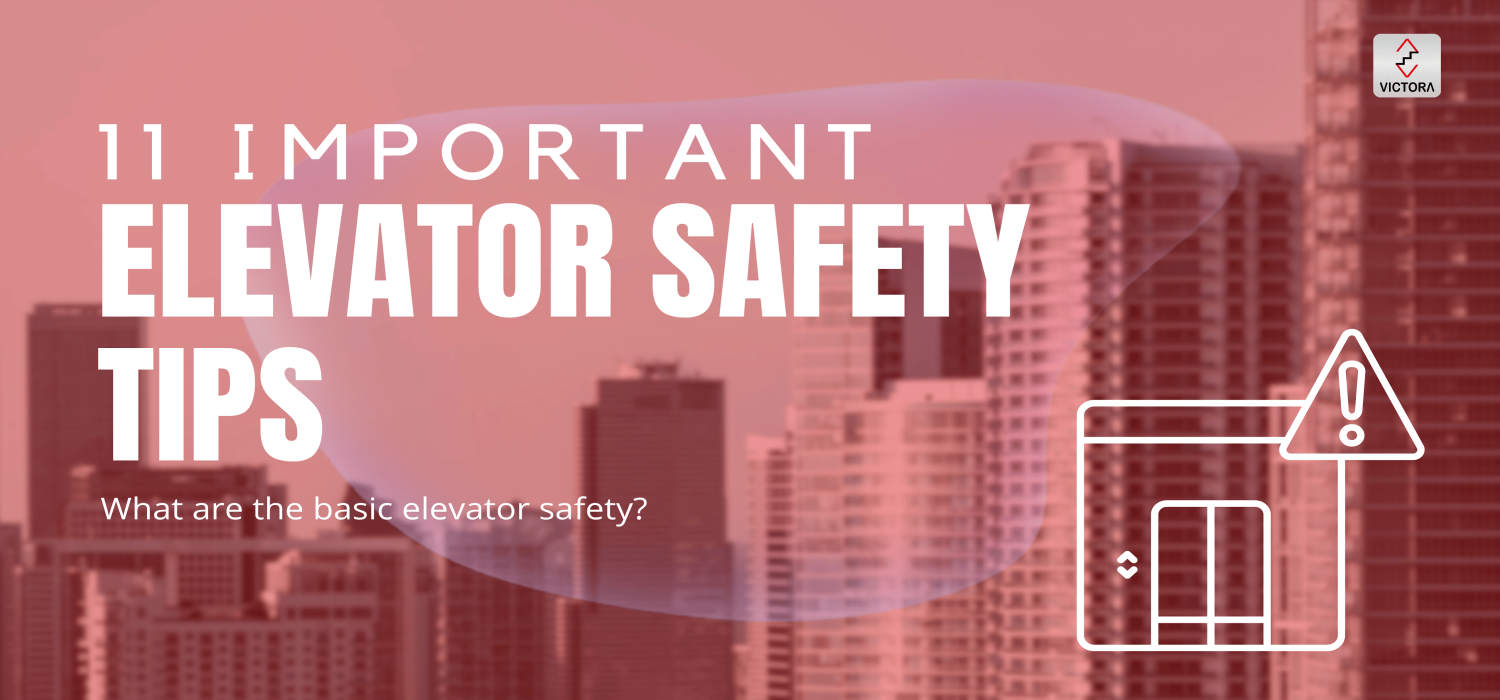Introduction

Navigating the vertical world has never been safer with our comprehensive guide to the 11 Important Elevator Safety Tips. Whether you’re a daily commuter, an office worker, or a curious explorer, understanding how to ride elevators securely is paramount.
In this blog post, we delve into expert-curated advice, sharing invaluable insights garnered from years of experience. Elevate your safety awareness and ensure every lift-off is a smooth and worry-free journey. From fundamental etiquette to emergency preparedness, we’ve got you covered, step by step.
Elevate confidently – read on!
Understanding Elevator Safety:
Types of Safety in an Elevator: There are two main types of safety mechanisms in elevators: mechanical and electrical. Mechanical safety systems include overspeed governors and safety gears, which engage if the elevator moves too quickly or unexpectedly. Electrical safety systems encompass door sensors, emergency stop buttons, and interlocks that prevent the elevator from moving unless the doors are securely closed.
Safety Capacity of an Elevator: Every elevator has a specific weight limit, known as the “safety capacity.” This limit is determined by the elevator’s design and the strength of its components. Exceeding the safety capacity can lead to strain on the elevator’s motor and suspension system, potentially causing it to malfunction.
Read more here – Elevator and Escalator
Elevator Safety Features: Modern elevators are equipped with various safety features to protect riders. These include:
- Door sensors that prevent doors from closing when an object is detected.
- Emergency buttons that allow communication with building personnel or emergency services.
- Overload sensors that prevent the elevator from moving if the weight limit is exceeded.
- Fire service mode that allows firefighters to control the elevator during emergencies.
Elevator Safety Tips for Riders:
- Wait Patiently: When approaching an elevator, ensure it has come to a complete stop and the doors are fully open before entering. Rushing into a closing elevator door can lead to accidents.
- Mind the Gap: Always be mindful of the gap between the elevator floor and the building floor. Ensure your step is aligned before entering or exiting the elevator.
- Even Weight Distribution: When inside the elevator, distribute the weight evenly and avoid crowding in one corner. This prevents overloading, which can strain the elevator and compromise its safety.
- Respect the Door: Keep your hands and objects away from the closing doors. Modern elevators have sensors to prevent doors from closing on obstructions, but it’s best to avoid any risks.
- Emergency Button: Familiarize yourself with the location of the emergency button. In case of an unforeseen situation, you can easily alert building personnel or emergency services.
- Smooth Entry and Exit: Wait for the elevator to come to a complete stop before exiting. Avoid jumping into or out of a moving elevator.
- Avoid Overloading: Elevators have a maximum weight capacity for a reason. Exceeding this capacity not only compromises your safety but also puts unnecessary strain on the elevator’s mechanisms.
- Keep Children Close: If you’re traveling with children, ensure they are under your supervision at all times. Teach them basic elevator safety rules, like standing still and holding the handrail.
- Hold the Handrail: Holding onto the handrail provides stability, especially during sudden stops or starts. This is particularly important for those with mobility issues.
- Stay Calm: In the rare event of an elevator malfunction, stay calm. Use the emergency button to communicate with building staff or emergency services, and wait patiently for assistance.
- Avoid Horseplay: Elevators are not the place for horseplay or any activities that can compromise safety. This includes leaning on the doors or pressing multiple buttons for fun.
Elevator Safety Tips for Workers:
Elevator safety is equally important for workers who regularly interact with lifts. Here are some additional tips for those who work in buildings with elevators:
- Regular Maintenance: Ensure elevators are regularly inspected and maintained by certified professionals. This helps prevent unexpected breakdowns or malfunctions.
- Emergency Training: Building personnel should undergo training on how to handle elevator-related emergencies. This includes evacuations and assisting riders during unexpected situations.
- Avoid Overloading: Workers, especially those moving heavy equipment or materials, must adhere to weight limits and load specifications. Overloading elevators can lead to accidents and mechanical failures.
- Secure Cargo: When transporting items in an elevator, make sure they are properly secured. Unstable or shifting cargo can lead to imbalance and compromise safety.
- Use Service Elevators: Whenever possible, use service elevators for transporting large or heavy items. This reduces wear and tear on public elevators and minimizes disruption for riders.
Conclusion: Elevator Safety Matters!
Elevator safety should never be taken lightly. Whether you’re a rider or a worker, following these 11 important elevator safety tips and understanding the underlying safety mechanisms will help ensure a secure journey every time you step into an elevator. Remember, prioritizing safety benefits everyone and contributes to a smoother and worry-free elevator experience.
So, next time you find yourself waiting for an elevator, take a moment to review these safety tips and rest assured that you’re doing your part to promote a safe environment for all elevator users.
Remember, safety is a shared responsibility—let’s all rise together, safely!
FAQs:
Q1: What are 4 safety rules when using a lift?
A1: Four important safety rules to follow when using an elevator are: waiting patiently, observing weight limits, not blocking the doors, and keeping your balance.
Q2: How many types of safety are there in an elevator?
A2: Elevators have various safety features, including emergency stop buttons, door sensors, overload sensors, and fire service modes.
Q3: What is the safety capacity of an elevator?
A3: The safety capacity of an elevator is determined by its weight limit, which should never be exceeded. This ensures the elevator operates safely and efficiently.
Q4: Do elevators have a safety feature?
A4: Yes, elevators are equipped with multiple safety features, such as emergency stop buttons, door sensors, and overload sensors, to prevent accidents and ensure rider safety.
Q5: How to safely ride an elevator?
A5: To safely ride an elevator, wait patiently for it to arrive, mind the gap while entering and exiting, observe weight limits, and avoid engaging in any activities that might affect balance.
Q6: What are 3 rules of etiquette when riding in an elevator?
A6:When it comes to elevator etiquette, remember to respect personal space, hold doors open for others, and keep conversations considerate. These simple rules ensure a smooth and respectful ride for everyone on board.

